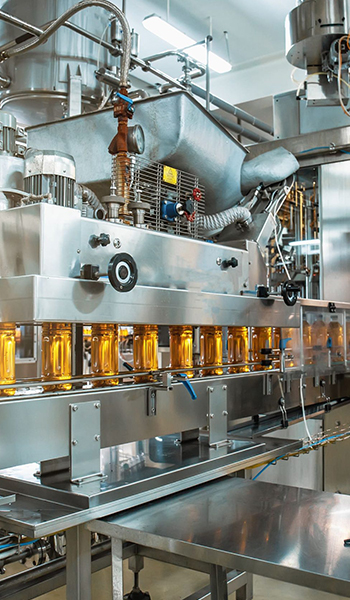Quality Control and Inspection
Product Inspection:
Vision systems are used to inspect FMCG products for defects or inconsistencies. For example, in food packaging, vision systems can detect incorrect seals, torn packaging, missing labels, or damaged products.
Visual Quality Checks:
Vision systems can ensure that products meet certain appearance standards, such as checking the shape, color, and texture of food products, beverages, or personal care items. For instance, in snack production, vision systems can check that each bag is filled to the correct weight or that chips are of the correct size and shape.
Labeling and Barcode Verification
Label Inspection:
Vision systems ensure that labels are properly applied, have the correct information, and are positioned accurately. This is especially important for FMCG products where incorrect labeling can lead to regulatory fines, customer complaints, or misidentification of products.
Barcode and QR Code Scanning:
Machine vision systems read and verify barcodes or QR codes on products to ensure accurate identification, correct packaging, and inventory tracking.
Fill Level Detection
Product Fill Verification:
In the case of liquid products (like beverages or cleaning liquids), vision systems verify that bottles or containers are filled to the correct level. This ensures consistency in product quantity and reduces waste.
Overfill or Underfill Detection:
Vision systems can detect any underfill or overfill issues, ensuring that the correct volume is packaged, which is crucial in maintaining product consistency and customer satisfaction.
Assembly Line Automation
Automated Assembly Verification:
In FMCG manufacturing, vision systems automate the verification of production processes such as product assembly, filling, capping, sealing, and labeling. Vision systems can check if each step of the process has been completed correctly, improving the speed and accuracy of production.
Multi-Pack Inspection:
For companies that produce multi-pack products (e.g., six-packs of beverages or multi-product bundles), vision systems can inspect whether the products are correctly grouped and packed, minimizing errors.
Defect Detection
Surface Defects Detection:
For many FMCG products like personal care items (shampoos, creams) or packaged food, vision systems inspect the products for surface defects (scratches, dents, or missing components). For example, in the production of bottles or jars, they can detect cracks or misprints in the labels.
Foreign Object Detection:
Vision systems can detect foreign contaminants or particles in food or beverage products, ensuring that only clean, contaminant-free items are packaged and sent to market.
Sorting and Grading
Product Sorting:
Vision systems can be used to sort products based on size, shape, color, or other characteristics. In fruit or vegetable processing, machine vision systems can grade produce by quality, sorting out damaged or imperfect items.
Ingredient Verification:
In food production, vision systems can ensure that the correct ingredients are included in a product or that ingredients are dispensed correctly, helping to maintain quality control.
Real-Time Monitoring and Analytics
Performance Monitoring:
Vision systems provide real-time data on the performance of the production line, allowing manufacturers to track production speeds, detect bottlenecks, and address issues quickly.
Data Analytics:
Vision systems generate valuable data on product consistency, defect rates, and production quality, which can be analyzed to optimize manufacturing processes and reduce downtime.
Regulatory Compliance
Traceability and Serialization:
In industries like food and beverage, machine vision can help verify batch numbers, expiration dates, and product codes to ensure compliance with traceability regulations. This helps in the event of product recalls or regulatory audits.
Packaging Compliance:
Machine vision systems ensure that packaging meets industry regulations, such as health and safety warnings or nutritional labeling requirements for food products.
Benefits for FMCG Companies:
- Increased Efficiency and Productivity: By automating quality checks and inspection processes, FMCG companies can significantly increase production speeds and reduce the need for manual inspection, thereby improving overall productivity.
- Enhanced Product Quality: Machine vision systems help detect defects early in the production process, preventing defective products from reaching consumers. This leads to better product consistency and a higher level of customer satisfaction.
- Cost Savings: Automating inspection and packaging processes reduces the labor costs and minimizes costly product recalls by ensuring that only high-quality products are produced and packaged.
- Regulatory Compliance and Traceability: Vision systems help ensure compliance with labeling, packaging, and traceability regulations, reducing the risk of fines and reputational damage.
- Reduced Waste: Vision systems can detect underfill, overfill, or defects in packaging early on, helping FMCG companies minimize product waste and improve profitability.
- Faster Time to Market: With automation and real-time monitoring, production lines run more smoothly, reducing delays and improving time-to-market for FMCG products.

